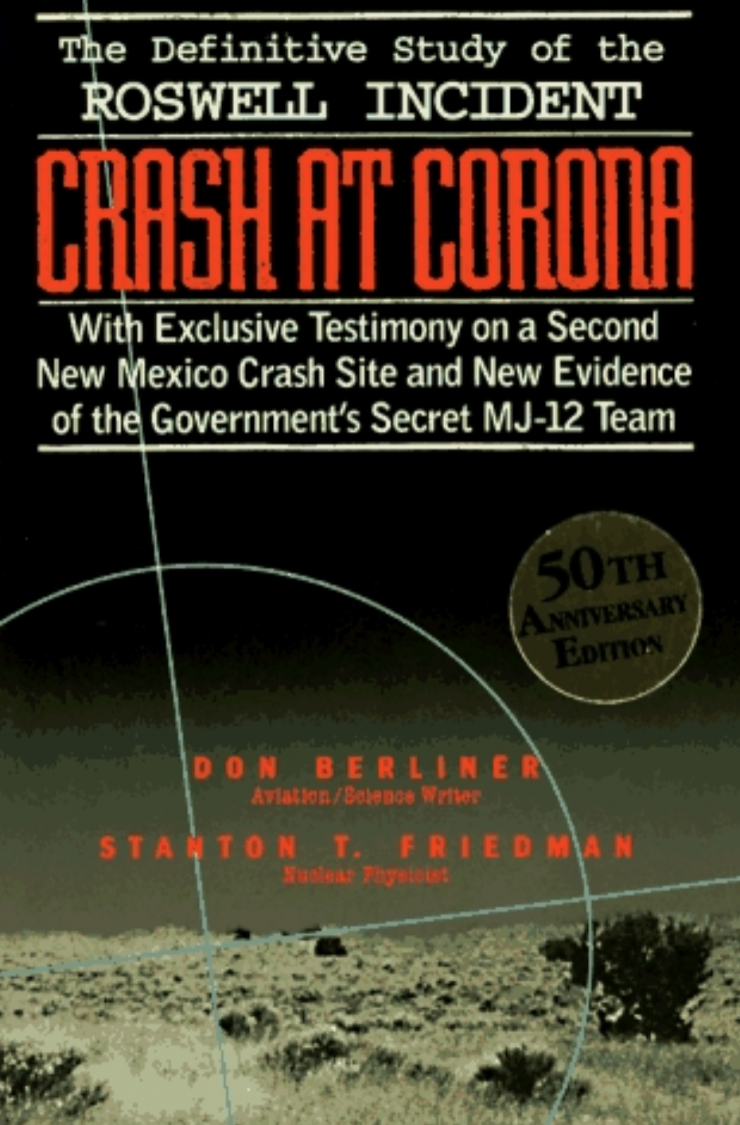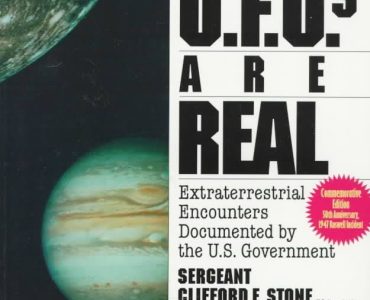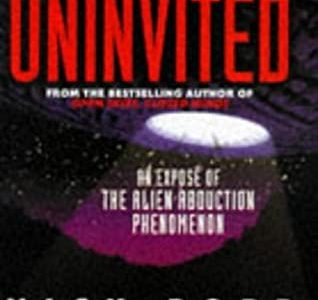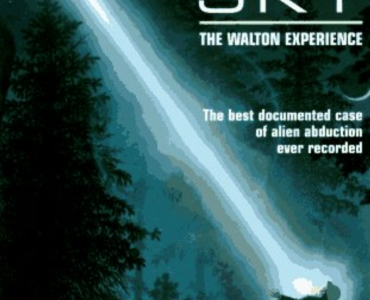Pros
- Very detailed description and explanation of the events surrounding and leading up to the crash at Corona
- Includes diagrams or pictures that help illustrate or visualize the event or people involved, especially the MJ-12 pictures
- Written in an objective, factual manner without unfounded assumptions
- Fascinating reveal about the crash and survivors
Cons
- Still no definitive evidence
- A lot of background information surrounding the crash that readers have to go through
Stanton T. Friedman comes across as a very objective researcher in the field. His writing appears thoroughly researched, fact-checked, and straightforward. Friedman’s background also lends a lot of authority to the writing.
This book is a must-read for people who want to learn more about the events and people surrounding the Corona crash, perhaps better known as the Roswell crash.
Crash at Corona: The U.S. Military Retrieval and Cover-up of a UFO Review
One of my biggest disappointments about these type of books is the absence of evidence. I’m not so certain that a large-scale operation like a crashed UFO retrieval could remain so secretive for so long. The more people involved, the more likely the word would get out.
I’ve heard numerous reasons for why the government is so successful in keeping these types of secrets, but I’m not sure if these reasons are valid. Take, for instance, the reason people use to support the silence: people respected and supported the government more during that era. But our nation’s history reveals countless episodes of protest and rebellion.
What Stanton T. Friedman and Don Berliner do very well in this book is provide a wealth of contextual information that helps couch the whole crash at Corona in history. That’s what makes this book especially great: it captures the mood and thinking of the time, allowing readers today to understand why people did what they did then.
Friedman and Berliner include newspaper articles and photographs to support their claims. Where available, names of witnesses or military officials are included, further emphasizing transparency over conspiracy. I appreciated that Friedman avoided dwelling on unsubstantiated events or rumors. I’m sure that in the field, he must have come across more rumor and conspiracy than actual documented fact.
In fact, I think that the authors provide so much context that it gets in the way of the actual discussion or analysis of the crash at Corona. For instance, readers have to go through 5-6 chapters of background information on topics like MJ-12 before arriving at the actual event. While those chapters are interesting for first-time readers into the field, other readers may see these chapters as obstacles.
Friedman’s actual discussion and report of the crash from eyewitness testimony is fascinating. Readers get information directly from as relevant sources as possible, whereas conspiracy theories and rumors sometimes wildly exaggerate the event.
For example, some of the detail shared by Gerald Anderson, if real, tells us that there was indeed an actual crash. And he was close enough to the crash to not only observe the survivors or beings, but also their physical condition and the ragged or torn state of their uniforms. In fact, the firsthand witness shares that he only a few feet away from the beings. The amount of detail that the witness shares suggests to me that this is an actual recounting of the event rather than something conjured from a creative mind.
Other details revealed from Friedman’s interviews with primary sources show readers that these people are honest. One detail that comes to mind is the hieroglyphics that were present on a metallic beam. Jesse Marcel, son of the rancher, states in the interview that he didn’t recall seeing any animal figures, which would have been common with Egyptian hieroglyphs. All of these details, and more, point to an actual incident of some sort and an actual cover-up.
What makes this book especially powerful is the transparency that Friedman adopts: there’s no hiding of names and no withholding of secrets. These events can (and should) be verified by any number of people who were involved, and if their stories are collaborated, then readers have a better idea of the truthfulness of the event.
Unfortunately, given the passage of time, many of the people involved with Crash at Corona: The U. S. Military Retrieval and Cover-up of a UFO are no longer around. But this book preserves their stories. Perhaps one day their stories, and maybe even their reputations, will be vindicated with the release of the truth.
Read reviews of other books on similar topics below.



